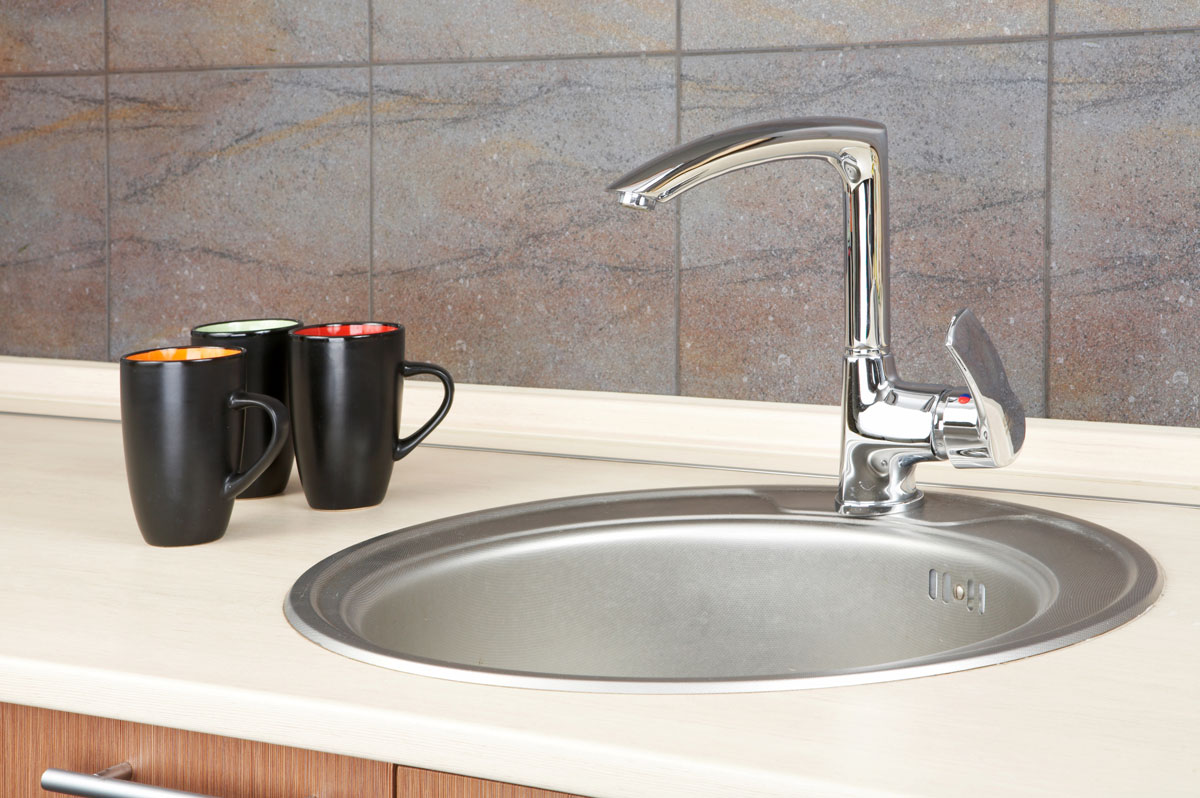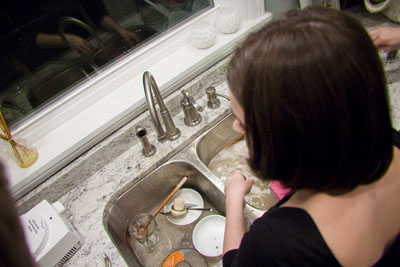We have come across this article on Repairing Common Household Plumbing Issues directly below on the net and believe it made good sense to discuss it with you on this page.

In this article, we will be looking at five easy actions you can take to free your kitchen area sink from obstructions as well as save you from the discomfort and also shame of handling a stopped up kitchen sink.
Blocked kitchen area sinks are among one of the most common drainage issues property owners deal with. And what's more, it's a unpleasant as well as extremely unpleasant sight. Picture mosting likely to the sink to do your dishes and also finding out that the drainpipe is blocked and water can not flow down conveniently.
The majority of clogged up drains are caused by food particles, soap, fat, and also oil particles. They obstruct the sink and make it hard for water to drop the drain promptly. While it is tempting to put a call through to the plumbers, there are a couple of DIY hacks you could try initially prior to making that phone call.
1. Sodium Bicarbonate and Vinegar
Instead of utilizing any kind of kind of chemicals or bleach, this method is more secure and also not hazardous to you or your sink. Baking soda as well as vinegar are daily home things used for lots of various other things, and they can do the method to your kitchen sink.
Firstly, remove any kind of water that is left in the sink with a mug.
Then pour a good quantity of cooking soda down the tubes.
Pour in one cup of vinegar.
Seal the drainage opening and also permit it to choose some mins.
Pour hot water down the drain to disappear other persistent residue and particles.
Following this straightforward technique could work, as well as you can have your kitchen sink back. Repeat the procedure as much as you consider necessary to clear the sink of this debris totally.
2. Try a Plunger
If the trouble is not from the garbage disposal, you can attempt using a plunger. Plungers are typical home tools for this celebration, and they can come in helpful if you utilize them appropriately. A flat-bottomed bettor is most appropriate for this, however you can make do with what you have is a commode bettor.
Comply with the following easy steps to use the plunger effectively:
Secure the drainpipe with a cloth and also fill up the sink with some hot water
Place the plunger ready over the drain and start diving
Check to see if the water runs freely after a couple of plunges
Repeat the process up until the drain is free
3. Possibly it's the Garbage Disposal
In many instances, the obstruction may be due to an obstruction in the disposal. Use pliers instead.
If this does not function, you can explore the complying with alternative to unclog your kitchen area sink.
4. Use a Hanger
Using a cord fabric hanger or a plumber's serpent if you have one can do the method. All you require do is align the hanger to go down the drain while you thoroughly pick out the particles causing the blockage.
Run hot water down the tubes hereafter to see exactly how effective you were.
5. Use Boiling Water
When faced with a stopped up sink, the first thing you should try is to put boiling water down the drainpipe. That has to do with one of the most straightforward treatment to clogged sinks and also drains. Boiling water helps counteract the fragments as well as particles triggering the obstruction, especially if it's oil, soap, or oil bits, as well as oftentimes, it can flush it all down, as well as your sink will certainly be back to typical.
Do not try this approach if you have plastic pipes (PVC) due to the fact that hot water could thaw the lines and trigger even more damage. If you utilize plastic pipelines, you might intend to stay with making use of a bettor to get particles out.
Utilizing this approach, turn on the faucet to see exactly how water moves after putting hot water down the drain. Try the process again if the blockage persists. Nevertheless, the obstruction could be much more persistent in some cases as well as need greater than just boiling water.
Final Words
Attempting these few tricks might save you the expenditures of having a plumber inspect it. But in most cases, a plumber is what we require. In cases where you locate it difficult to unblock the sink even after trying all these methods, it might be time to leave it to the professionals.
Get in touch with specialist plumbing companies to fix your drain issues and various other various family plumbing requirements.
Blocked kitchen sinks are one of the most usual drainage concerns house owners encounter. Picture going to the sink to do your recipes and also finding out that the drain is clogged as well as water can not stream down quickly.
They block the sink as well as make it hard for water to go down the drain swiftly. When faced with a blocked sink, the first point you must try is to pour boiling water down the drainpipe. Boiling water assists counteract the bits and also debris creating the blockage, specifically if it's oil, soap, or grease bits, and also in lots of cases, it can purge it all down, and your sink will certainly be back to normal.
How to Unclog a Kitchen Sink
Take the Plunge
Start your efforts by plunging. Use a plunger with a large rubber bell and a sturdy handle. Before getting to work on the drain, clamp the drain line to the dishwasher. If you don t close the line, plunging could force dirty water into the dishwasher.
Fill the sink with several inches of water. This ensures a good seal over the drain.
If you have a double sink, plug the other drain with a wet rag or strainer.
Insert the plunger at an angle, making sure water, not air, fills the bell.
Plunge forcefully several times. Pop off the plunger.
Repeat plunging and popping several times until the water drains.Clean the Trap
The P-trap is the curved pipe under the sink. The trap arm is the straight pipe that attaches to the P-trap and runs to the drain stub-out on the wall. Grease and debris can block this section of pipe. Here s how to unclog a kitchen sink by cleaning out the trap:
Remove as much standing water from the sink as possible.
Place a bucket under the pipe to catch the water as it drains.
Unscrew the slip nuts at both ends of the P-trap. Use slip-joint pliers and work carefully to avoid damaging the pipes or fasteners.
If you find a clog, remove it. Reassemble the trap.
If the P-trap isn t clogged, remove the trap arm and look for clogs there. Run the tip of a screwdriver into the drain stub-out to fetch nearby gunk.Spin the Auger
With the trap disassembled, you re ready to crank the auger down the drain line.
Pull a 12-inch length of cable from the auger and tighten the setscrew.
Insert the auger into the drain line, easing it into the pipe.
Feed the cable into the line until you feel an obstruction. Pull out more cable if you need to.
If you come to a clog, crank and push the cable until you feel it break through. The cable will lose tension when this happens.
Crank counterclockwise to pull out the cable, catching the grime and debris with a rag as the cable retracts.

We hope you enjoyed our excerpt about DIY Plumbing Fixes. Thanks a lot for taking the time to read our content. So long as you enjoyed reading our blog post plz do not forget to pass it around. Bless you for your time. Don't forget to check our website back soon.
Trusted plumbing emergency service awaits.